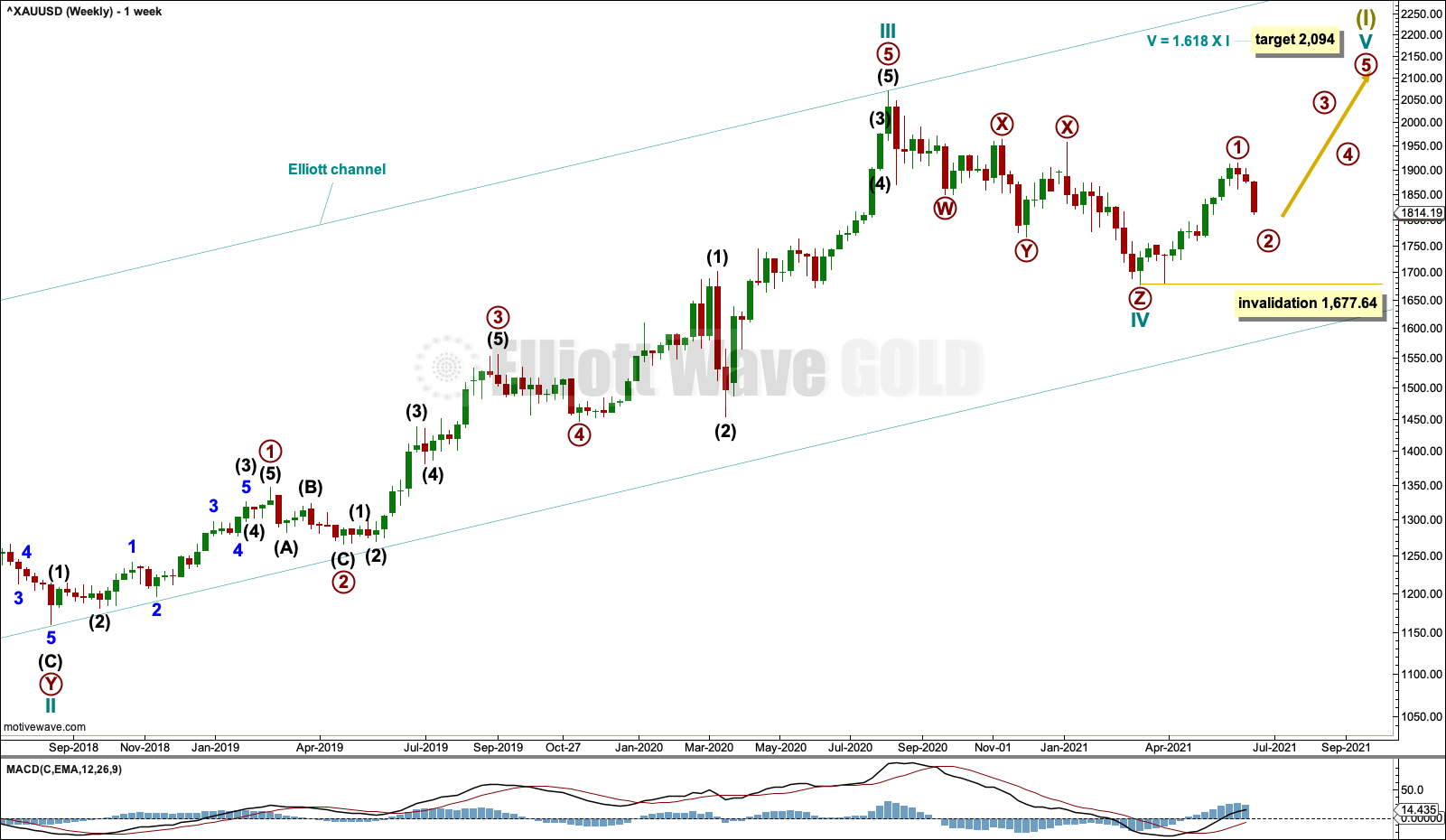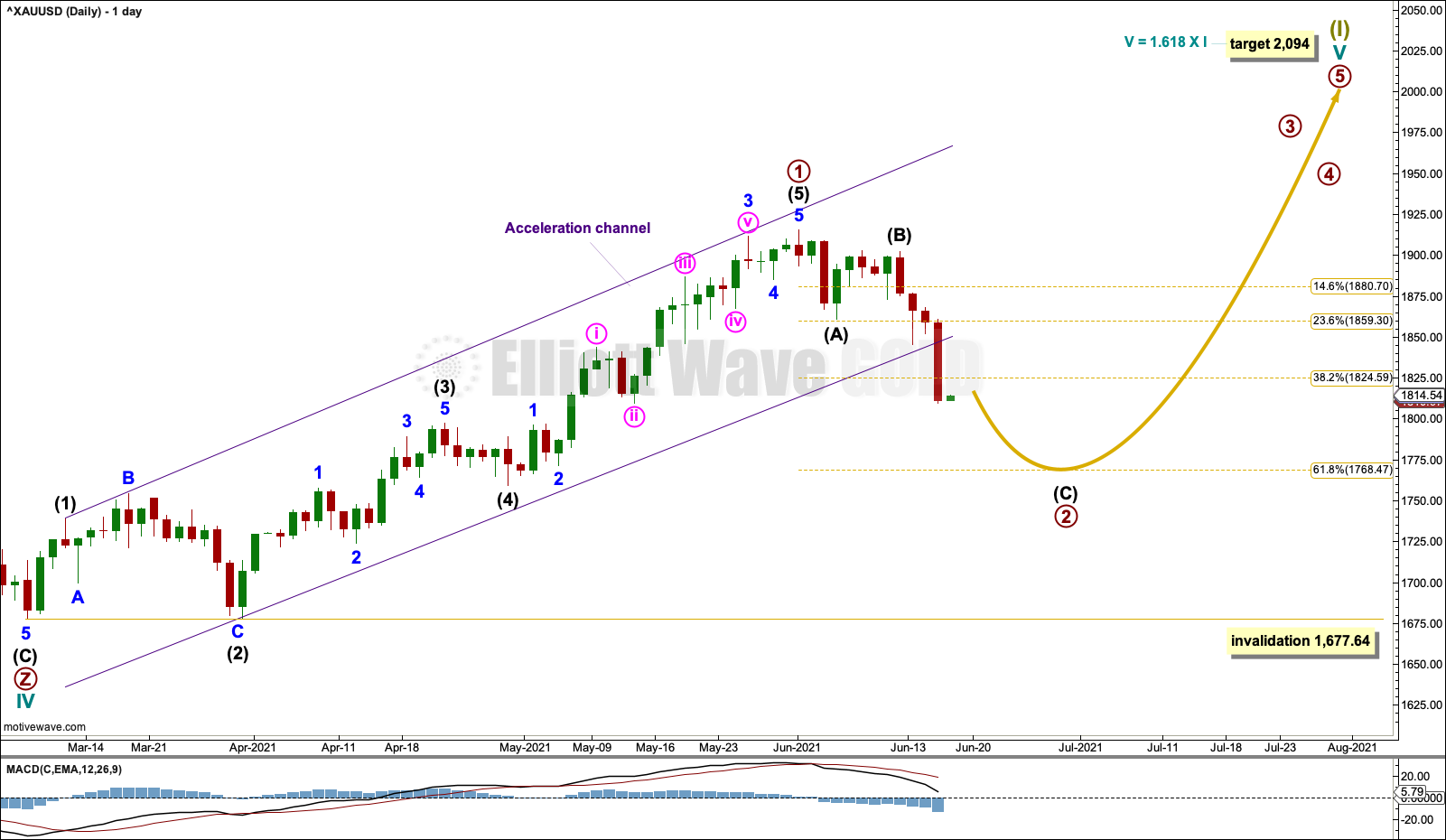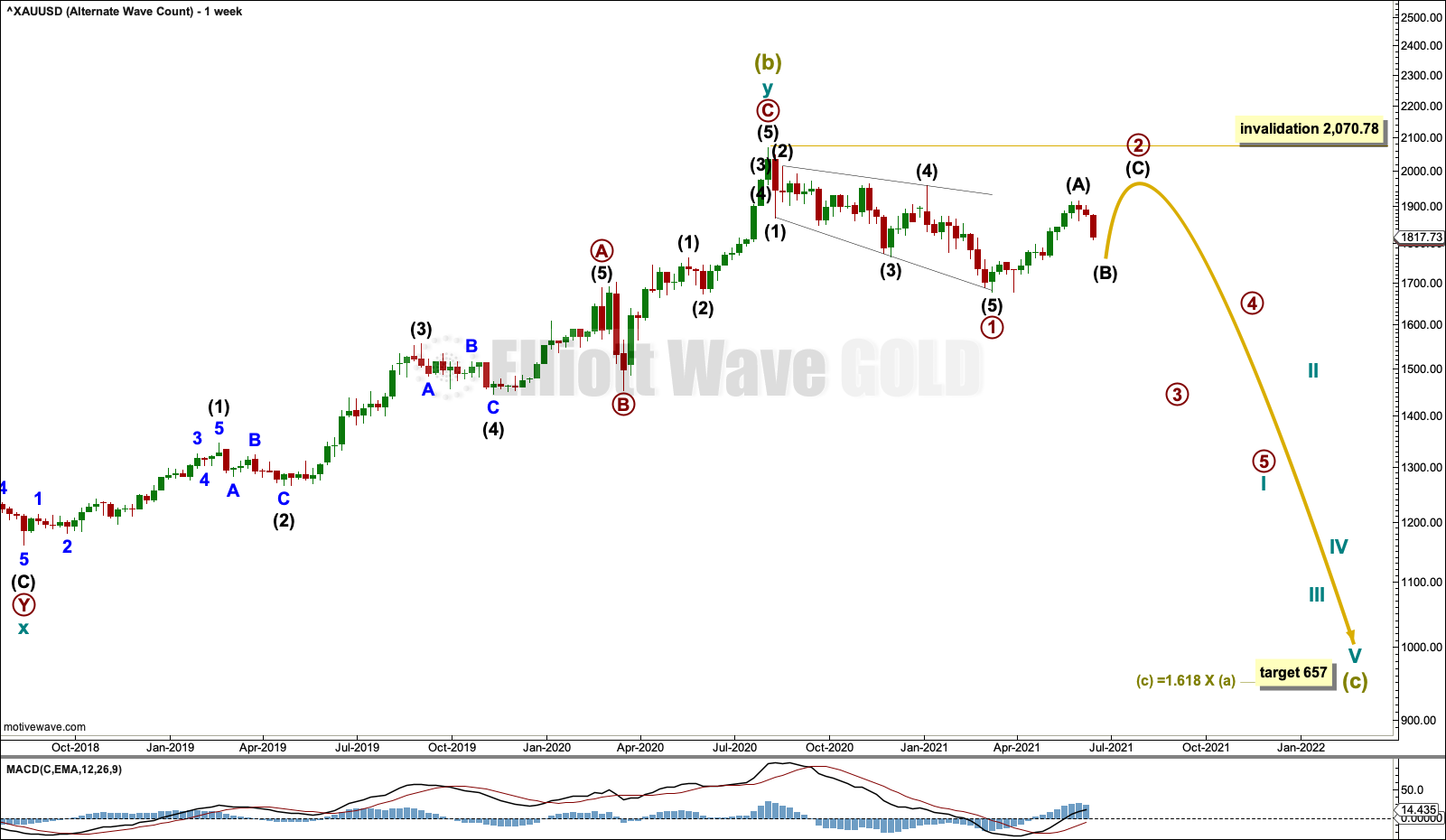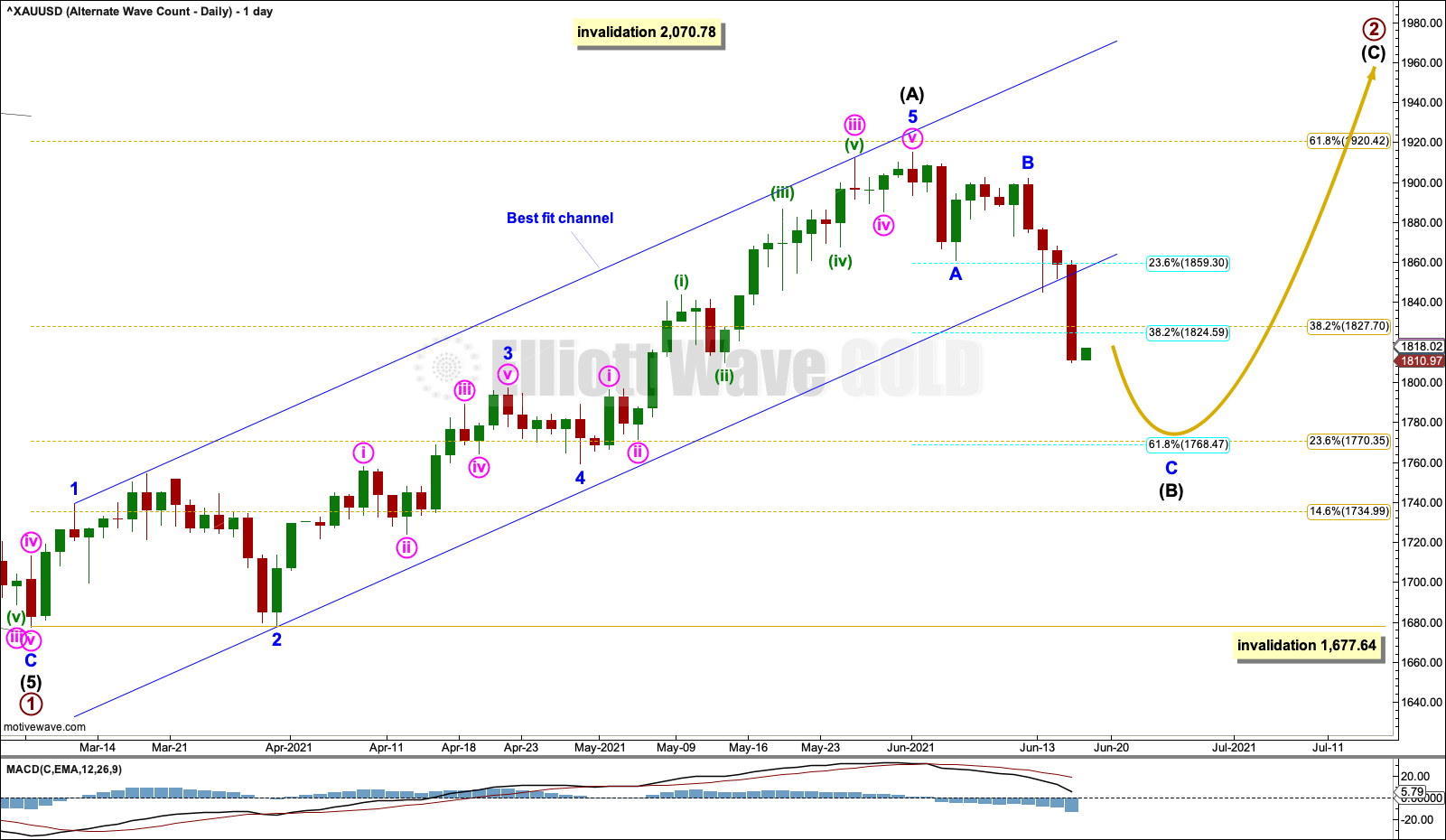GOLD: Elliott Wave and Technical Analysis | Charts – June 16, 2021
A strong downwards session changes both Elliott wave counts.
A Fibonacci ratio is used to identify potential support.
Summary: Both wave counts now expect more downwards movement to end possibly about 1,768. Thereafter, both wave counts expect upwards movement.
Grand SuperCycle analysis and last monthly charts are here.
MAIN ELLIOTT WAVE COUNT
WEEKLY CHART
This wave count sees the the bear market complete at the last major low for Gold on 3 December 2015.
If Gold is in a new bull market, then it should begin with a five wave structure upwards on the weekly chart.
Cycle wave I fits as a five wave impulse with reasonably proportionate corrections for primary waves 2 and 4.
Cycle wave II fits as a double flat. However, within the first flat correction labelled primary wave W, this wave count needs to ignore what looks like an obvious triangle from July to September 2016 (this can be seen labelled as a triangle on the second weekly chart on prior analysis here). This movement must be labelled as a series of overlapping first and second waves. Ignoring this triangle reduces the probability of this wave count in Elliott wave terms.
Cycle wave IV may be a complete triple zigzag. Triple zigzags are not rare structures, but they are not common. The probability of this wave count is further reduced in Elliott wave terms. This is one reason why an alternate is still considered.
Cycle wave V may have begun. Within cycle wave V: Primary wave 1 may be over at the last high, and primary wave 2 may not move beyond the start of primary wave 1 below 1,677.64.
DAILY CHART
A target is calculated for cycle wave V. If this target is wrong for this wave count, then it may be too low. As price approaches the target, if the structure is incomplete, then a higher target may be calculated.
Primary wave 1 within cycle wave V may be complete.
Primary wave 2 may be expected to most likely be a deep pullback lasting weeks. It may most likely end close to the 0.618 Fibonacci ratio of primary wave 1 at 1,768.47.
Primary wave 2 may not move beyond the start of primary wave 1 below 1,677.64.
HOURLY CHART
Primary wave 2 may be underway and may be subdividing as a zigzag, which is by a wide margin the most common Elliott wave structure for a second wave.
Within primary wave 2: Intermediate waves (A) and (B) may be complete, and intermediate wave (C) may be extending.
Within intermediate wave (C): Minor waves 1 and 2 may be complete, minor wave 3 may continue lower, and minor wave 4 may not move into minor wave 1 price territory above 1,845.37.
ALTERNATE ELLIOTT WAVE COUNT
WEEKLY CHART
The bigger picture for this alternate Elliott wave count sees Gold as within a bear market, in a three steps back pattern that is labelled Grand Super Cycle wave IV on monthly charts. Grand Super Cycle wave IV may be subdividing as an expanded flat pattern.
Super Cycle wave (b) within Grand Super Cycle wave IV may be a complete double zigzag. This wave count expects Super Cycle wave (c) to move price below the end of Super Cycle wave (a) at 1,046.27 to avoid a truncation and a very rare running flat. The target calculated expects a common Fibonacci ratio for Super Cycle wave (c).
Super Cycle wave (c) may have begun with a leading expanding diagonal for primary wave 1. Leading expanding diagonals in first wave positions are uncommon, so the probability of this wave count is reduced. However, it has a good fit and must be considered.
Second wave corrections to follow leading diagonals in first wave positions are usually very deep. Primary wave 2 is so far deep and the structure looks incomplete; so far it is following a common pattern. Primary wave 2 may not move beyond the start of primary wave 1 above 2,070.78.
DAILY CHART
Primary wave 2 may be subdividing as a zigzag. Within the zigzag: Intermediate wave (A) may be complete at the last high. Intermediate wave (B) may be continuing lower. Intermediate wave (B) may be an incomplete zigzag that may end about the 0.618 Fibonacci ratio of intermediate wave (A) (cyan) at 1,768.47.
If intermediate wave (A) is correctly analysed as a five, then intermediate wave (B) may not move beyond its start below 1,677.64. A new low below 1,677.64 would indicate primary wave 2 should be relabelled as a complete single zigzag.
TECHNICAL ANALYSIS
WEEKLY CHART

Click chart to enlarge. Chart courtesy of StockCharts.com.
The upwards trend may have ended, for now. There is now a bearish candlestick reversal pattern in a Hanging Man that has bearish confirmation in the following candlestick.
DAILY CHART

Click chart to enlarge. Chart courtesy of StockCharts.com.
Not shown on this chart (it happened after New York closed) is the strong downwards movement shown on the Elliott wave charts that is a break below support, which was identified at 1,855.
The -DX line has crossed above the +DX line; a new downwards trend may have begun, but the ADX line is still declining, so no clear trend is shown yet.
Downwards movement may continue until Stochastics reaches oversold and price reaches support. Next support is about 1,800.
GDX WEEKLY CHART
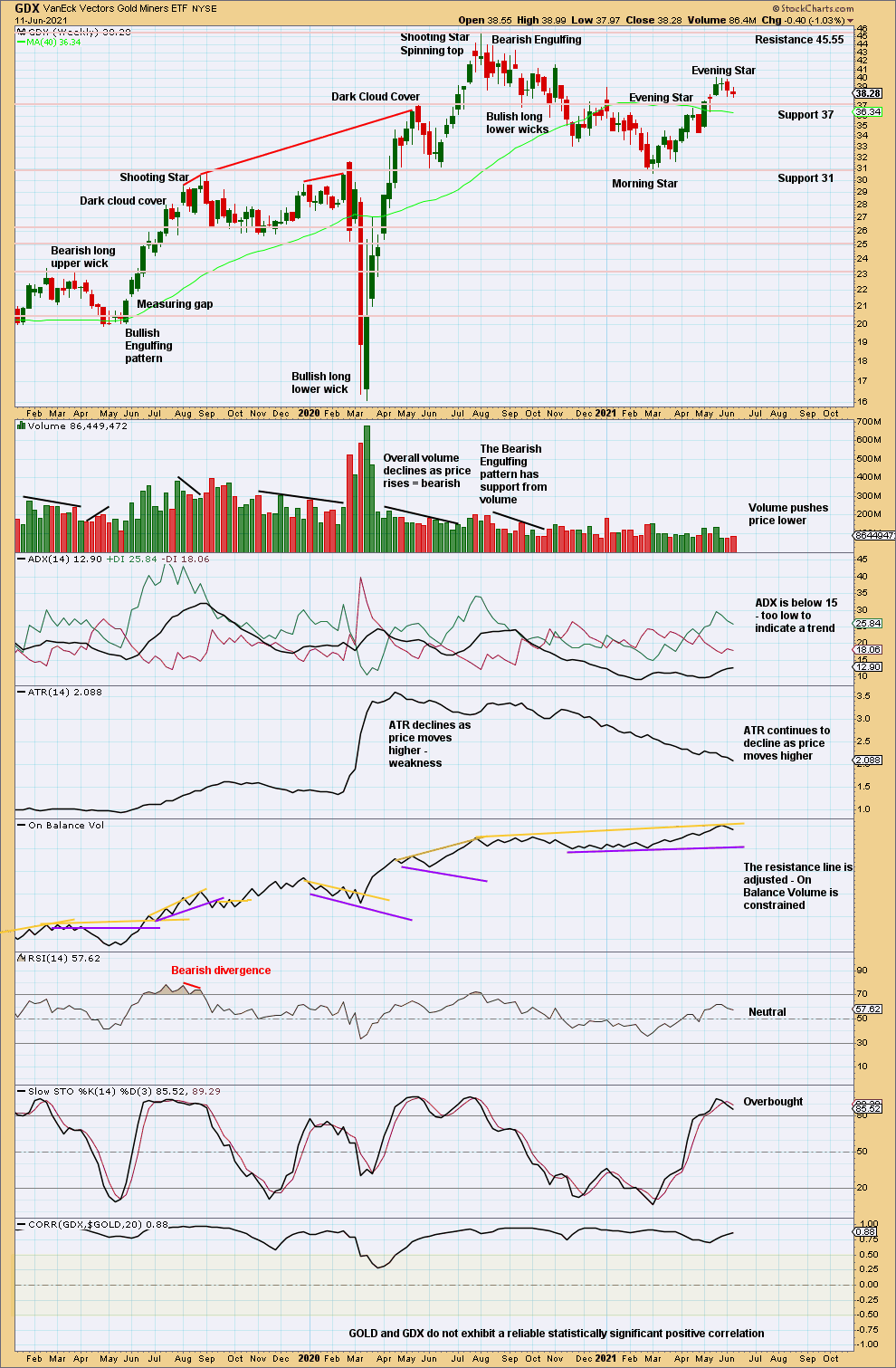
Click chart to enlarge. Chart courtesy of StockCharts.com.
Next resistance is at 45.55.
An Evening Doji Star is now followed by another red candlestick that has some support from volume. This is bearish.
GDX DAILY CHART
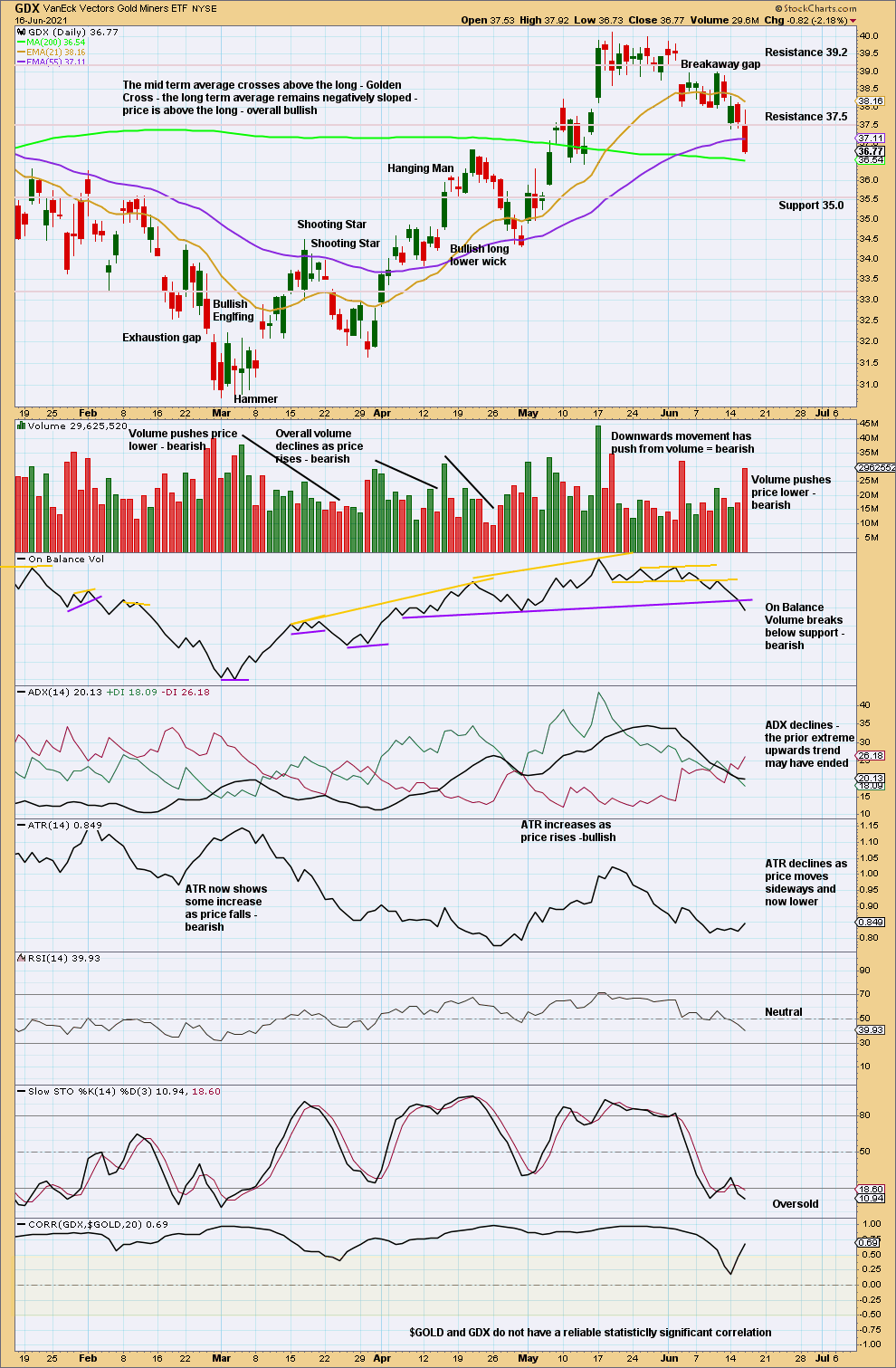
Click chart to enlarge. Chart courtesy of StockCharts.com.
The breakaway gap at 39.34 may offer resistance.
Support at 37.5 has been breached. Next support is about 35.0.
Published @ 07:20 p.m. ET.
—
Careful risk management protects your trading account(s).
Follow my two Golden Rules:
1. Always trade with stops.
2. Risk only 1-5% of equity on any one trade.
—
New updates to this analysis are in bold.
—

